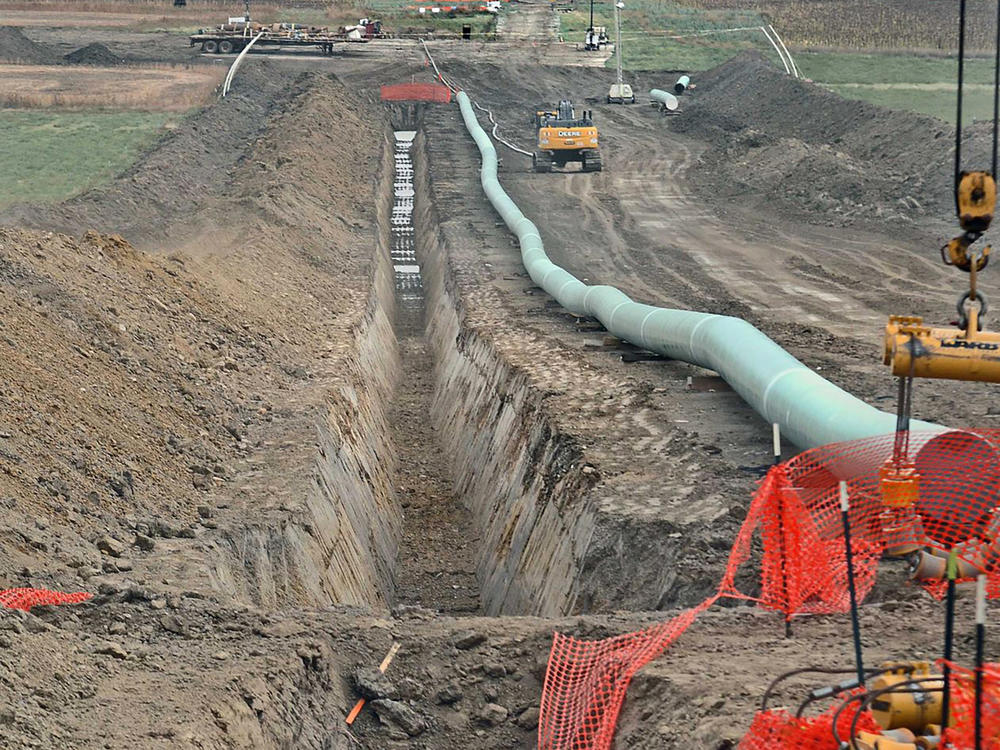Section Branding
Header Content
Future of controversial Dakota Access pipeline's river crossing remains unclear
Primary Content
BISMARCK, N.D. — Federal officials on Friday released a draft environmental review of the Dakota Access oil pipeline, but said they're waiting for more input before deciding the future of the line's controversial river crossing in North Dakota.
The draft was released over three years after a federal judge ordered the environmental review and revoked the permit for the Missouri River crossing, upstream of the Standing Rock Sioux Tribe's reservation. The tribe is concerned a pipeline oil spill could contaminate its water supply.
The environmental review is key for whether the federal government reissues the permit. The pipeline has been operating since 2017, including during the environmental review.
The draft environmental impact statement, which is dated in June but was made public Friday, noted that the Corps "has not selected a preferred alternative," but will make a decision in its final review, after considering input from the public and other agencies.
The draft details five options for the pipeline, including denying the easement for the crossing and removing or abandoning a 7,500-foot segment. Officials could also approve the easement with measures for "increased operational safety," or grant the same easement with no changes.
A fifth option is a 111-mile reroute of the pipeline to north of Bismarck, over 38 miles upstream from the current crossing. The reroute would require new permits from federal, state and local authorities and regulators, which could take at least two years. The exact path of such a reroute is unknown, according to the draft.
"We are seeking public input on the environmental analysis of each alternative, and that input combined with the environmental analysis will help us to make an informed decision among the alternatives," Corps Omaha District spokesman Steve Wolf told The Associated Press.
A comment period will end Nov. 13. Public meetings are scheduled Nov. 1-2 in Bismarck.
A final environmental impact statement will follow the public input and environmental analysis, and a formal decision will be made, Wolf said.
North Dakota's governor-led, three-member Industrial Commission on Thursday heard of the draft's pending release. Republican Gov. Doug Burgum on Thursday called the selection of no preferred alternative "unusual if not unprecedented."
The pipeline, which officials say is safe, moves oil from western North Dakota to Illinois. Leaders in North Dakota's oil industry and state government consider the pipeline to be crucial infrastructure, with far less oil now transported by rail.
The pipeline is moving about 600,000 to 650,000 barrels of oil per day. Its capacity is 750,000 barrels per day. North Dakota produces about 1.1 million barrels of oil per day.
The U.S. Supreme Court last year refused to take up an appeal of the tribe's lawsuit over the pipeline. The tribe first filed the lawsuit in 2016. Thousands of people gathered and camped near the pipeline's river crossing for protests that lasted months and sparked hundreds of arrests in 2016 and 2017. More than 830 criminal cases resulted from the protests.
Standing Rock last year withdrew as a cooperating agency in the environmental review.
The pipeline "is an ongoing trespass against the Standing Rock Sioux Tribe," Tribal Chair Janet Alkire previously said. "Every day that the pipeline operates and transfers oil, trespass damages continually accrue."
Copyright 2023 NPR. To see more, visit https://www.npr.org.

